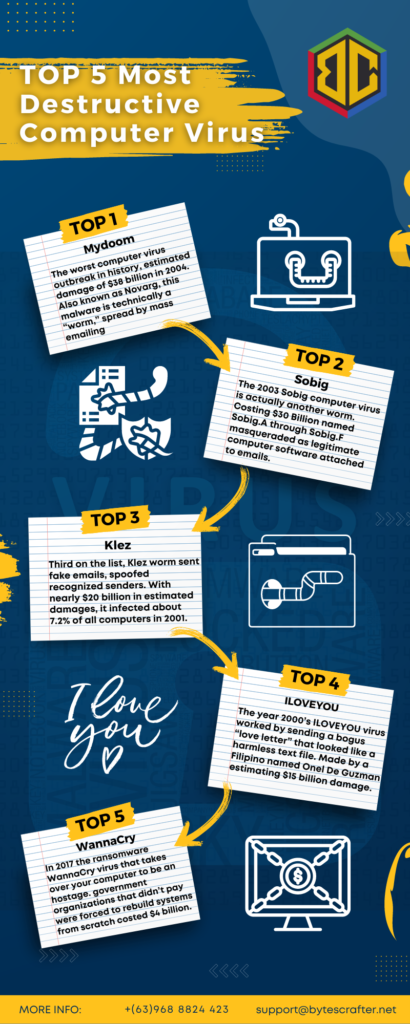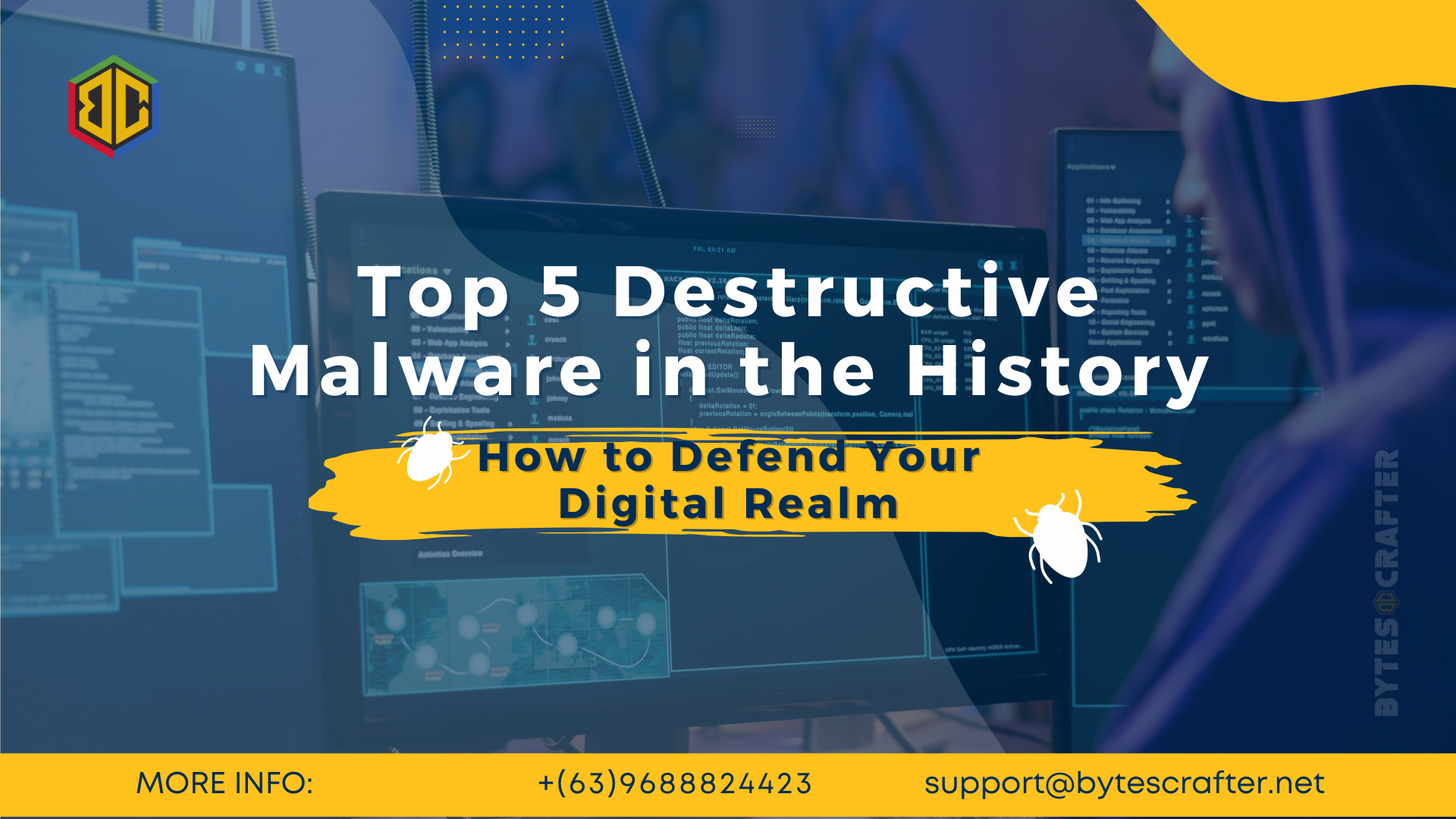Welcome to the realm of digital perils, where the shadows of destructive malware lurk ominously. In this exploration of cybersecurity’s darker side, we delve into the annals of human history to uncover the most notorious viruses that have wrought havoc upon digital landscapes. Join us as we unravel the mysteries surrounding these digital threats and learn how to defend against them.
Subheading: Understanding the Threat Landscape of Destructive Malware
Introduction to Destructive Malware
Destructive malware, a sinister breed of digital threats, has plagued computer systems since the dawn of the digital age. From viruses and worms to ransomware and Trojans, these malicious programs have left a trail of destruction in their wake, shaping the course of cybersecurity history.
Exploring the Top 5 Destructive Malware
Before we delve into the details of each notorious virus, let’s take a moment to understand the magnitude of their impact. The following infographic highlights the top 5 most destructive malware in human history, shedding light on their names and the havoc they wreaked on digital landscapes. From the lightning-fast spread of Mydoom to the crippling ransom demands of WannaCry, each virus has left an indelible mark on the cybersecurity landscape.
Defending Against Digital Perils
As we reflect on the history of destructive malware, it becomes clear that vigilance and proactive cybersecurity measures are paramount. From regular software updates to employee education and robust antivirus solutions, there are steps we can take to mitigate the risks posed by these digital perils.

In the ever-evolving landscape of cybersecurity, understanding the history and impact of destructive malware is essential for defending against future threats. By shining a light on the top 5 notorious viruses in human history, we empower ourselves to navigate the digital realm with greater resilience and preparedness. If you’re ready to bolster your defenses against destructive malware and secure your digital landscape, contact us today to learn how we can help. Let’s stay vigilant, proactive, and united in our efforts to safeguard the digital realm against the perils of destructive malware.


OR BUSINESS WEBSITE? Let's work together!
In my work, I try to find the right balance between form and function. From technical drawings, all the way to the photographic renders, and the actual representations of my work as a designer, my philosophy is that of simplicity. At the same time, my style is distinctly mine – uncluttered, with clean shapes and modern space-saving solutions.



No Comments